
Java Server Faces is a popular web application framework for Java. In fact, it is the standard web application framework for Java EE. Granted there are other web frameworks around, but most corporate Java positions expect Java developers to have experience with JSF since it is an integral part of Java EE.
In this course, you will learn:
- Build a fully functioning JSF web application from scratch
- Set up your JSF development environment with Tomcat and Eclipse
- Read HTML form data with JSF
- Perform HTML form validation with built-in and custom rules
- Integrate Managed Beans to handle business logic
- Display data using tables
- Add database support with JDBC: query, insert, update and delete
- Build a complete database web app with JDBC
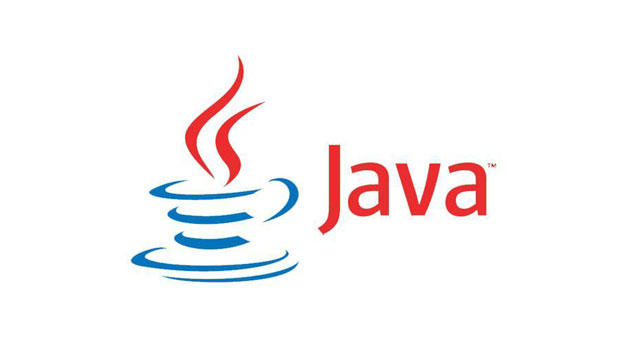
Java Information resources

Become Java Spring Boot Full Stack Cloud Developer. Learn AWS, React, Docker, Spring Data JPA & Spring Security. This is the course you need to learn everything you need to know about building real world Java applications and deploying them to the cloud using Spring and Spring Boot Frameworks.
- You will learn to build a Web Application, REST API and Full Stack Application with Spring Boot and Spring Frameworks
- You will Master Fundamentals of Spring Framework from Zero, no previous experience required
- You will Learn Spring Framework the MODERN WAY - The way Real Projects use it!
- You will learn the magic of Spring Boot - Auto Configuration, Spring Initializr and Starter Projects
- You will Learn the Best Practices in Developing Awesome Java Spring Applications from an Expert with 20 Years of Programming Experience
- You will learn to use a wide variety of Spring Boot Starter Projects - Spring Boot Web, Spring Boot Data JPA
- You will Acquire ALL the SKILLS to demonstrate an EXPERTISE with Spring Framework in Your Job Interviews
- You will Develop a REAL-TIME project with React and Spring Boot from SCRATCH
- You will Become the go to guy for Fixing Java Spring Framework problems in Your Project
- You will Understand the LATEST frameworks and technologies, including Spring Boot, Maven, Eclipse, JUnit and Mockito.
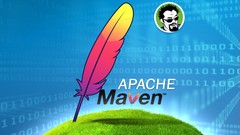
Apache Maven is the most popular Java build tool. Companies and Open Source communities around the world, consider Apache Maven the 'go-to' build tool for their Java projects.
In this course, you will learn to master Apache Maven. You will become a 'guru' using Apache Maven.
No previous experience with Apache Maven is required.
In just a few lessons, you will be building your first Apache Maven project!
In this course, you will:
-
Learn about the Maven Build Lifecycles
-
Use Maven to build and package Java projects
-
See how to use Maven with popular alternative JVM languages, including Groovy, Kotlin, and Scala
-
Configure Maven to run your unit and integration tests written in JUnit 3, JUnit 4, JUnit 5, TestNG, and Spock
-
Generate source code from XML and JSON Schemas
-
Leverage annotation processing at compile time for Project Lombok and Mapstruct
-
Learn in depth about the Apache Maven plugin system and see how plugins are used in the build lifecycle
-
Build Spring Boot applications with Apache Maven
-
Improve your code quality with code coverage and spot bugs reports
-
Unlock valuable capabilities of the Spring Boot Maven plugin!
-
Deploy project artifacts to Maven repositories
-
Develop multi-module Maven projects
-
Learn how to use Maven Build Profiles
-
Perform Releases using the Maven Release Plugin
-
How to use Maven for Enterprise Dependency management by using BOMs
-
And much more!
This is course is for the modern Java developer.
The entire course has been developed using Java 11.
Course Extras
-
All Source Code in GitHub - Get access to over a dozen GitHub repositories with valuable examples!
-
Slack Community - Join the instructor, teacher's assistants, and over 1,100 other students in a Slack Community exclusive to this course!
-
Free 120 Day IntelliJ Ultimate Trial - Students enrolling in the course can request a free 120 day trial for IntelliJ Ultimate (the most popular Java IDE!)
-
Closed Captioning / Subtitles - Closed captioning in english is available for all course videos!
-
PDF Downloads - All keynote presentations are available for you to download as PDFs.
-
Lifetime Access - When you purchase this course, you will receive lifetime access! You can login anytime from anywhere to access the course content.
Apache Maven is used by over 70% of Java organizations. Employers are seeking people with strong Maven skills.
Completing this course, you will be able to answer interview questions about Maven with confidence!
Even if you're already a Java developer using Apache Maven, this course will improve your Maven skills and show you new valuable best practices for your Java projects.
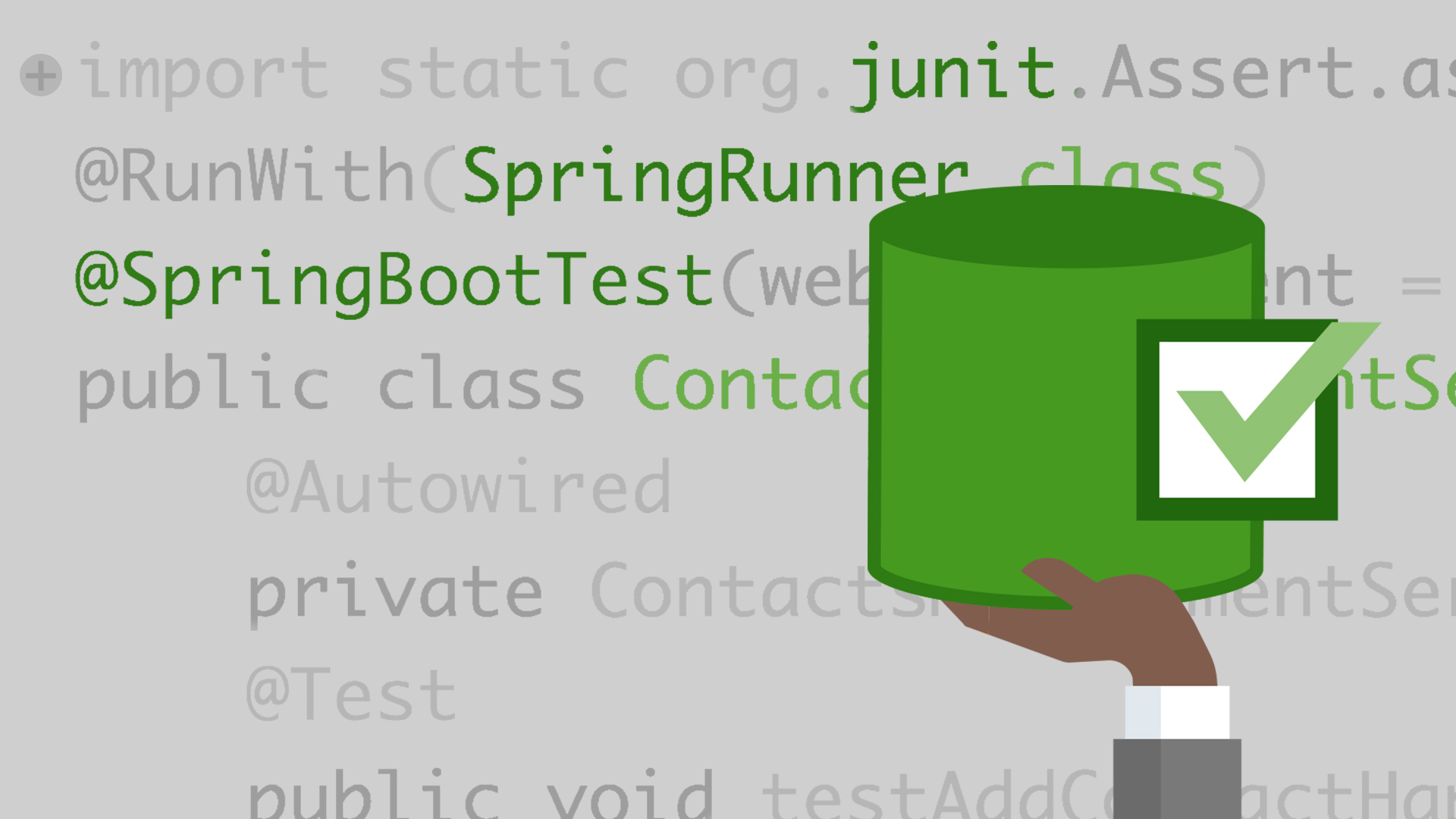
Practicing test-driven development in the Spring framework—or any framework, for that matter—can help you speed up your software release cycles, and ensure that you end up with a high-quality product. Learn the tricks for using Spring and JUnit— an open-source testing tool—together, and how to use this power combo across your entire backend stack to achieve optimal test coverage. In this course, discover how (and why) to use Spring and JUnit for test-driven development. Instructor Shonna Smith also shows how to lay the groundwork for testing some typical components in your backend application: @Service, @Controller, and @Repository components. Throughout the course, Shonna provides hands-on examples of how to apply these concepts in a real-world application.
Topics include:
- Why test-driven development matters
- Test planning for @Service, @Controller, and @Repository components
- Writing integration tests for @Service, @Controller, and @Repository components
- Writing unit tests for @Service, @Controller, and @Repository components
- Creating integration test datasets
- Making a feature test suite
- Making a continuous integration test suite
Ce cours n´est disponible qu´en anglais. Si ce n´est pas un problème pour vous, soumettez votre demande.
This course is in French only. If this is not a problem for you, by all means go ahead and apply.
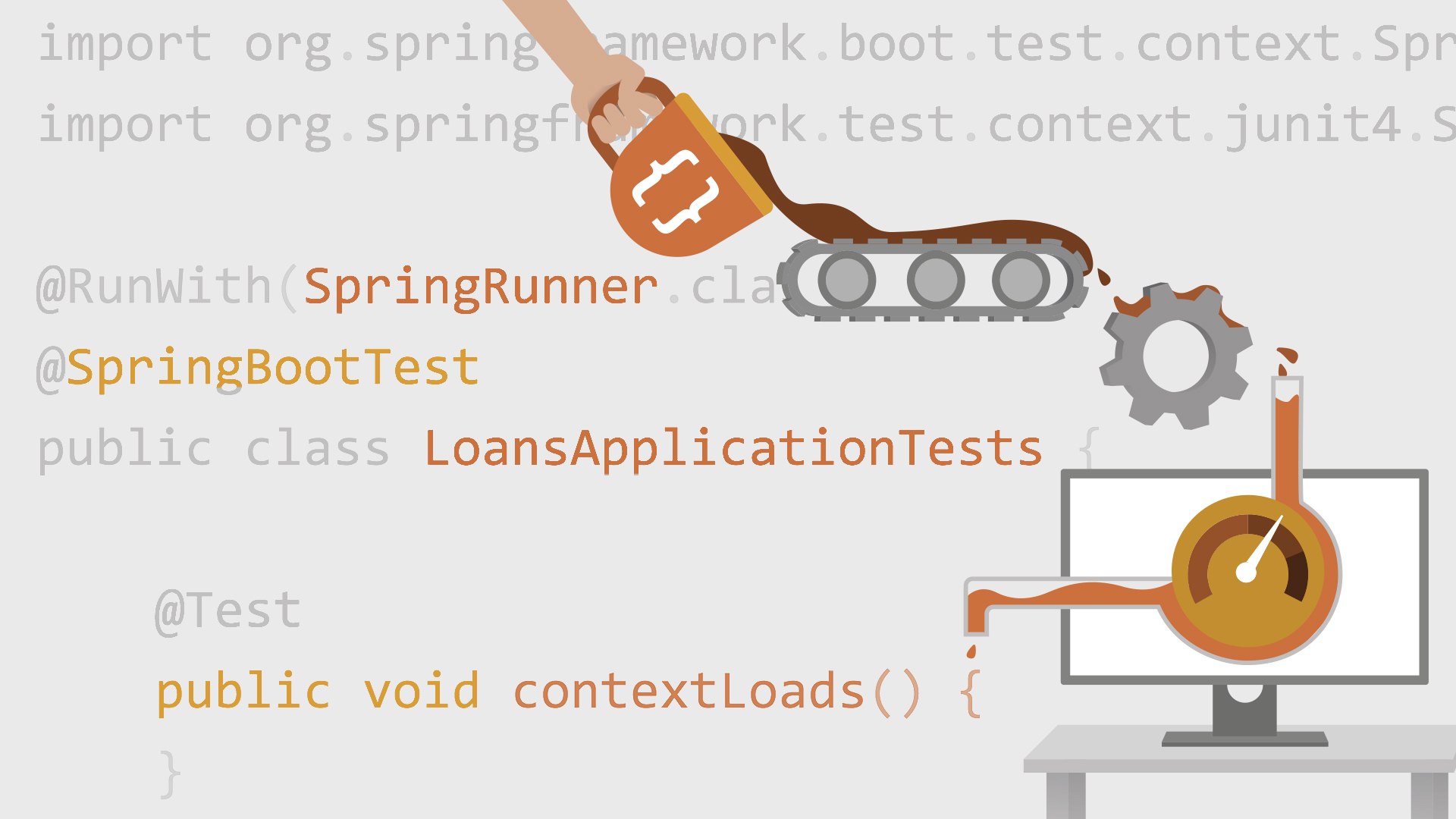
Learn how to use tests to drive the writing of your code, a key component of agile programming. More than just theory, this course covers a range of practical topics that can help Java developers get up and running with test-driven development (TDD). Instructor Matt Greencroft helps to acquaint you with the process that's required for TDD, as well as how to deal with real-world challenges you may encounter when carrying out TDD. Discover how to write your first test and determine what makes a good or bad test. Plus, learn how to test code where there's a dependency on third-party resources, how to create mocks and stubs with Mockito—a popular third-party library—and more.
Topics include:
Ce cours n´est disponible qu´en anglais. Si ce n´est pas un problème pour vous, soumettez votre demande.
This course is in French only. If this is not a problem for you, by all means go ahead and apply.
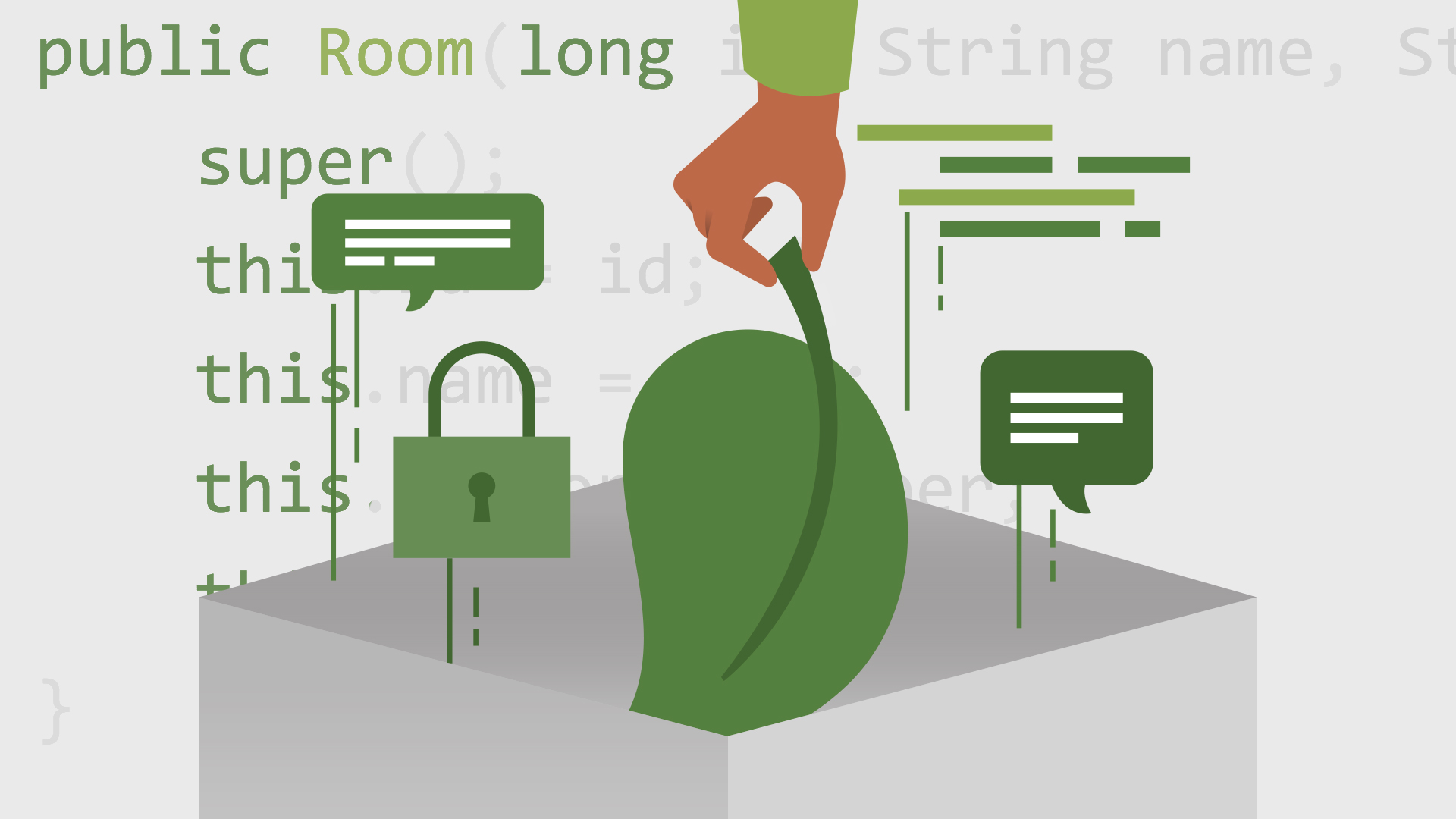
Learn how to get started with Spring Boot 2.x, a powerful framework that can help you build web applications quickly, using less code. The Java-based programs you build in Spring Boot "just run": they resolve their own dependencies and create containers for running code in any environment. Learn how to use Spring Boot to build your projects in this course with software architect and Spring developer Frank Moley. Frank shows how to initialize, containerize, and run Spring Boot web apps and CLI apps, and use the library of common starter projects to fill business-critical needs: data, messaging, security, and more. Plus, find how to extend Spring Boot by creating your own starters and use the Actuator module's HTTP endpoints to monitor and manage your apps.
Topics include:
Ce cours n´est disponible qu´en anglais. Si ce n´est pas un problème pour vous, soumettez votre demande.
This course is in French only. If this is not a problem for you, by all means go ahead and apply.
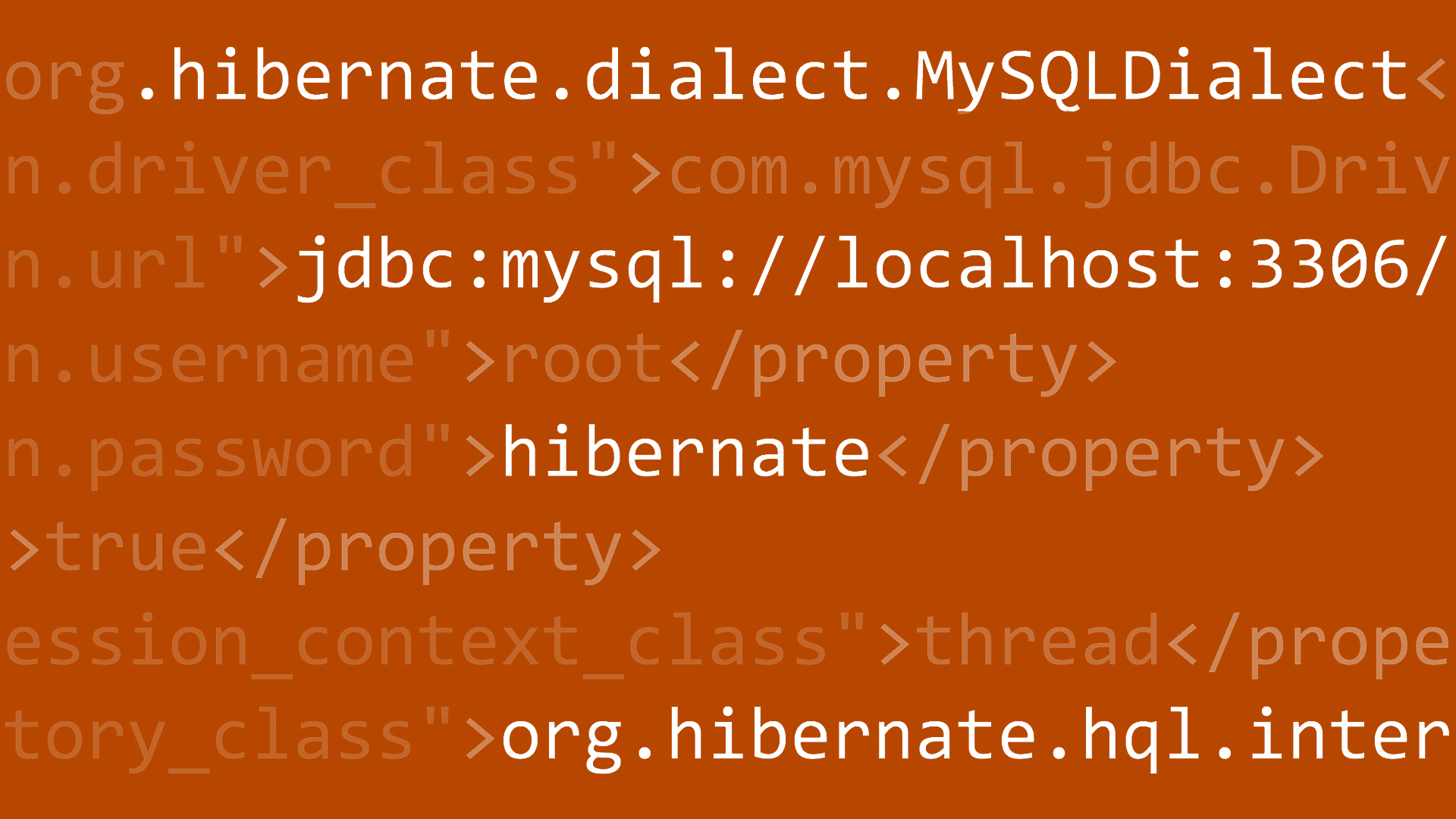
Working with both object-oriented software and relational databases can be time consuming. Due to a paradigm mismatch between how data is represented in objects (which are usually nonscalar values) versus relational databases (where scalar values are organized in tables) development costs are significantly higher. When you have to deal with object and relational models that don't play well together, the Hibernate ORM (object-relational mapping) solution for Java environments can help to provide persistent data that you can store and retrieve at a later time. Unlike Enterprise JavaBeans, this framework provides good persistence capabilities by simplifying the task of database operations in Java, allowing you to concentrate on enforcing business application logic instead of having to worry about table relationships and data integrity rules. Join staff instructor and Java expert Peggy Fisher as she explores how Hibernate works, as well as how to install, set up, and use this framework.
Topics include:
- Installing Hibernate
- Adding a database connection for a project in NetBeans
- Setting up the configuration file
- Reverse engineering to discover object details
- Mapping the database to Java objects
- Saving, updating, and deleting an object
- Retrieving objects
- Using the CriteriaQuery
- Using HQL and native SQL queries
- Using aggregate methods in HQL
Ce cours n´est disponible qu´en anglais. Si ce n´est pas un problème pour vous, soumettez votre demande.
This course is in French only. If this is not a problem for you, by all means go ahead and apply.
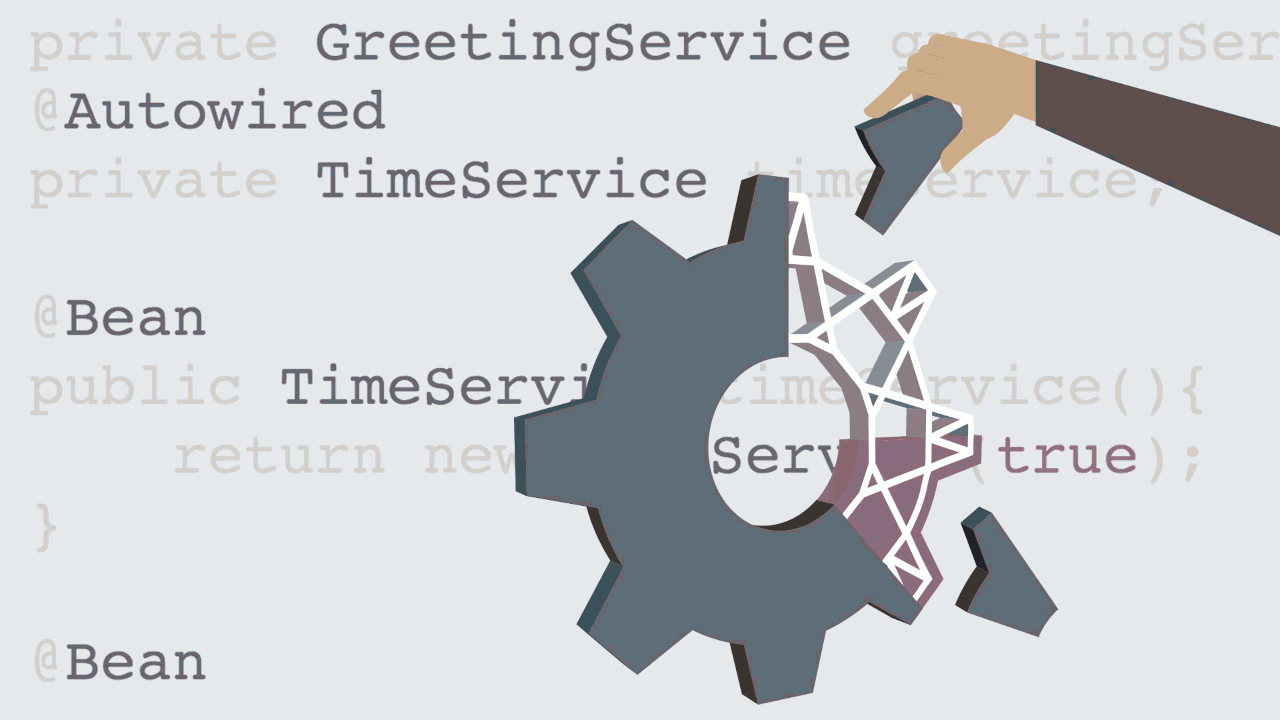
SCORE 4/5 by Smals Colleagues
Spring is an application framework and inversion-of-control (IOC) container for the Java platform. The framework's core features can be used by any Java application and are ideal for enterprise and internet-based app development. Get a comprehensive overview of Spring in this intermediate-level course with software architect Frank Moley. Frank develops applications and web services with Spring, and shares what he knows about configuring the ApplicationContext (the interface for accessing components, loading files, publishing events, and more), as well as the beans (objects within the Spring IOC container). He demonstrates a modern Java configuration workflow and explores the Spring lifecycle in depth, so you can extend the framework and better troubleshoot any issues you have with your applications. Plus, learn how to use aspect-oriented programming to add behaviors to your apps in a reusable way.
Topics include:
Ce cours n´est disponible qu´en anglais. Si ce n´est pas un problème pour vous, soumettez votre demande.
This course is in French only. If this is not a problem for you, by all means go ahead and apply.
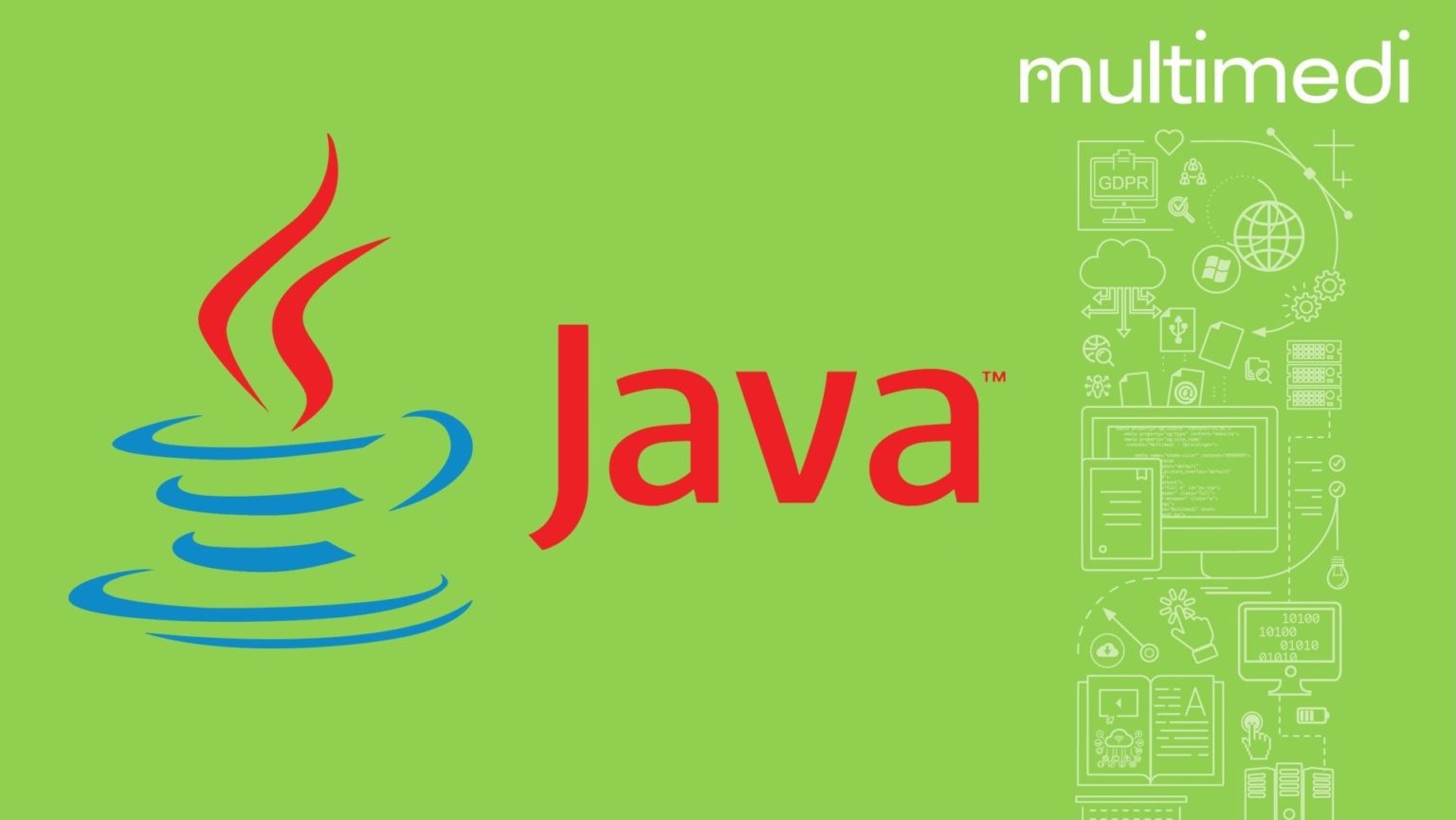
La création d'applications web modernes est une tâche très demandée dans l'industrie du logiciel. Alors qu'auparavant tout fonctionnait localement, aujourd'hui tout est hébergé de manière centralisée dans le Cloud. Découvrez comment construire une telle application avec Angular.
- • Le rôle d'un framework JS et comment Angular se situe par rapport à la concurrence actuelle.
- • Installation de Node (et NPM)
- • Introduction au langage de programmation TypeScript
- • Installation d'Angular CLI
- • Mise en place d'un projet Angular via l'Angular CLI dans le terminal
- • Encadrement de la structure de projet générée d'un projet Angular typique et orientation au sein de celle-ci
- • Utilité, création et utilisation des composants
- • Interpolation de texte (avec les pipes), directives et data binding pour manipuler le code HTML de manière programmatique dans l'aspect template des composants
- • Application du routage et encadrement des nuances d'une SPA dans ce contexte
- • Les services en tant que solution IoC, leur création et leur utilisation
- • Chargement et utilisation de HttpClient pour envoyer des requêtes HTTP de manière asynchrone (Observables) pour communiquer, entre autres, avec une API
- • Création et utilisation efficace de classes de modèles pour représenter des concepts dans Angular
- • Échanger des données entre les composants enfants et parents via les annotations @Input et @Output
- • Stocker et utiliser correctement les variables d'environnement
- • Appliquer des formulaires-template et des formulaires réactifs.
Ce cours est disponible en format eLearning et en cours classique avec accès au contenu eLearning (mixte). Faites votre choix ci-dessous.

L'écriture de tests auto-validants réduit les maux de tête et le stress des développeurs. Découvrez la vérité derrière cette affirmation dans ce cours!
- • Les tests de logiciels en tant que discipline
- • Les tests de logiciels en tant qu'attitude
- • L'automatisation des tests
- • Différents types de tests
- • Les tests en Java: le test unitaire
Ce cours est disponible en format eLearning et en cours classique avec accès au contenu eLearning (mixte). Faites votre choix ci-dessous.
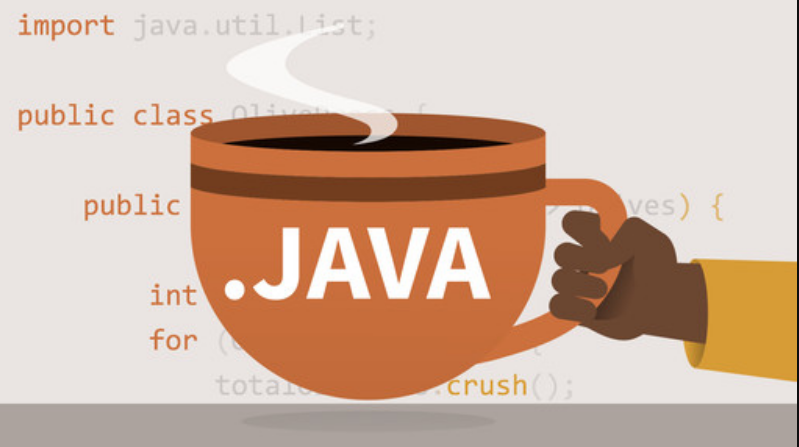
More from LinkedIn Learning's top experts Programming Languages Newsletter If you want to build applications for mobile devices, desktop computers, or the web, you need to know Java. This course provides the foundation for learning Java SE (Standard Edition), so you can build your first apps or start exploring the language on your own. Author David Gassner shows how to install Java and the IntelliJ IDEA IDE, and start working with variables, data types, keywords, and other critical language components. He also helps you control program flow with conditional logic and loops, store data with the Java Collections Framework, and understand how Java implements object-oriented coding principles such as inheritance and polymorphism.
Topics include:
- Understanding the history and principles of Java
- Installing Java, IntelliJ IDEA, and BlueJ
- Creating a Java project
- Working with variables, values, and expressions
- Working with object data types
- Building, comparing, and parsing strings
- Debugging and exception handling
- Creating loops and reusable code
- Passing arguments by reference or value
- Using simple and complex arrays
- Creating custom classes
- Understanding inheritance and polymorphism
- Managing files with Java libraries
- Documenting code with Javadoc
- Packaging classes in JAR files
Ce cours n´est disponible qu´en anglais. Si ce n´est pas un problème pour vous, soumettez votre demande.
This course is in French only. If this is not a problem for you, by all means go ahead and apply.

La programmation pour la maison et la cuisine est un passe-temps amusant. Mais lorsqu'il s'agit d'applications d'entreprise, la complexité augmente rapidement. Voici donc Spring. Le framework qui simplifie la complexité !
- • Spring Core
- • Inversion de contrôle et injection de dépendance
- • Introduction à Spring Boot
- • Lombok
- • Spring Initializr
- • Spring Data
- • Spring WEB (MVC)
- • Spring Validation
- • Spring Security
- • Spring Web (REST)
- • Testing et Spring
Ce cours est disponible en format eLearning et en cours classique avec accès au contenu eLearning (mixte). Faites votre choix ci-dessous.
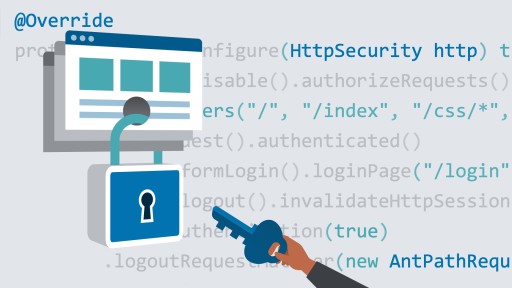
Developers sometimes struggle to see their apps as attackers do. They don't automatically recognize the vulnerabilities. That is where frameworks like Spring Security come in. Spring Security offers built-in authentication and authorization features for securing your apps and services, and easy ways to extend the framework to maximize its value. Join security architect Frank Moley, as he shows how to secure your Java projects with Spring Security, LDAP, Active Directory, and WebFlux. Along the way, learn how to use Spring Security to set up your own OAuth 2.0 servers to secure your apps and network services.
Topics include:

Une base de données est un élément important de nombreuses applications logicielles. Elle peut prendre de nombreuses formes. Découvrez comment les aborder et les concevoir dans ce cours.
- • Rôle d'une base de données
- • Types de bases de données
- • Écrire et lire le SQL
- • Conception de bases de données
- • Création, lecture et interprétation des ERD
- • Découvrir les relations entre les données
Ce cours est disponible en format eLearning et en cours classique avec accès au contenu eLearning (mixte). Faites votre choix ci-dessous.
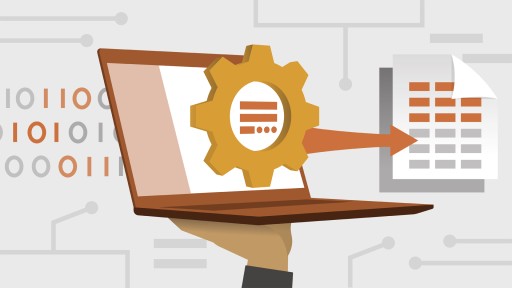
Durée de la formation : 1,7h
Coding to databases—which often involves the use of boilerplate code that's difficult to maintain and debug—can be tedious work. Upgrading applications to a different kind of data storage is similarly challenging, as it usually involves massive code rewrites. Spring Data addresses these issues by abstracting data store interactions into a common repository API and eliminating boilerplate code. In this course, learn how to easily implement JPA-based repositories using Spring Data JPA. Instructor Mary Ellen Bowman introduces you to the Spring Data umbrella project and covers a handful of commonly used querying methods that you can start practicing on your own. From simple query methods with property expressions to more dynamic options like Querydsl, Query by Example (QBE), Spring Data REST, and MongoDB, Mary Ellen helps you build the skills you need to leverage the features of this powerful data management tool.
Topics include:
Ce cours n´est disponible qu´en anglais. Si ce n´est pas un problème pour vous, soumettez votre demande.
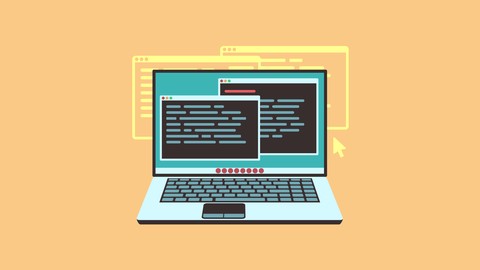
In this video tutorials we covered every topic in detail on the board and on the system with live execution. Definitely you can feel like you are learning in class room directly from the instructor. As the part of this course we are covering the following 11 topics:
- Lambda Expressions
- Functional Interfaces
- Default methods in Interface
- Static Methods in Interfaces
- Predicate
- Function
- Consumer
- Supplier
- Method Reference & Constructor Reference by Double Colon(::) Operator
- Stream API
- Date & Time API (Joda API)
- Enseignant: Jean-Bernard Demorcy
- Enseignant: Stephane Dereppe
- Enseignant: Christopher Siciliano
- Enseignant: Christopher Siciliano

Commencez à utiliser le système ORM le plus répandu dans Java pour écrire des logiciels axés sur les données.
- • Qu'est-ce que l'ORM ?
- • Avantages et inconvénients d'une approche axée sur les données
- • Le standard JPA
- • L'implémentation d'Hibernate
- • Connexion des bases de données
- • Relation vs OOP
- • Convertir les relations en OOP
- • Convertir OOP en relations
Ce cours est disponible en format eLearning et en cours classique avec accès au contenu eLearning (mixte). Faites votre choix ci-dessous.

Learn Java In This Course And Become a Computer Programmer. Obtain valuable Core Java Skills And Java Certification. In this course, you will learn:
- Learn the core Java skills needed to apply for Java developer positions in just 14 hours.
- Be able to sit for and pass the Oracle Java Certificate exam if you choose.
- Be able to demonstrate your understanding of Java to future employers.
- Learn industry "best practices" in Java software development from a professional Java developer who has worked in the language for 18 years.
- Acquire essential java basics for transitioning to the Spring Framework, Java EE, Android development and more.
- Obtain proficiency in Java 8 and Java 11.

Apprendre à construire un site web en utilisant les standards établis par le World Wide Web Consortium.
- • HTML et CSS
- • Javascript
- • Le design d'un site web
- • Approche mobile d'abord
- • Mise en ligne d'un site web
- • Utilisation de DOM
Ce cours est disponible en format eLearning et en cours classique avec accès au contenu eLearning (mixte). Faites votre choix ci-dessous.
